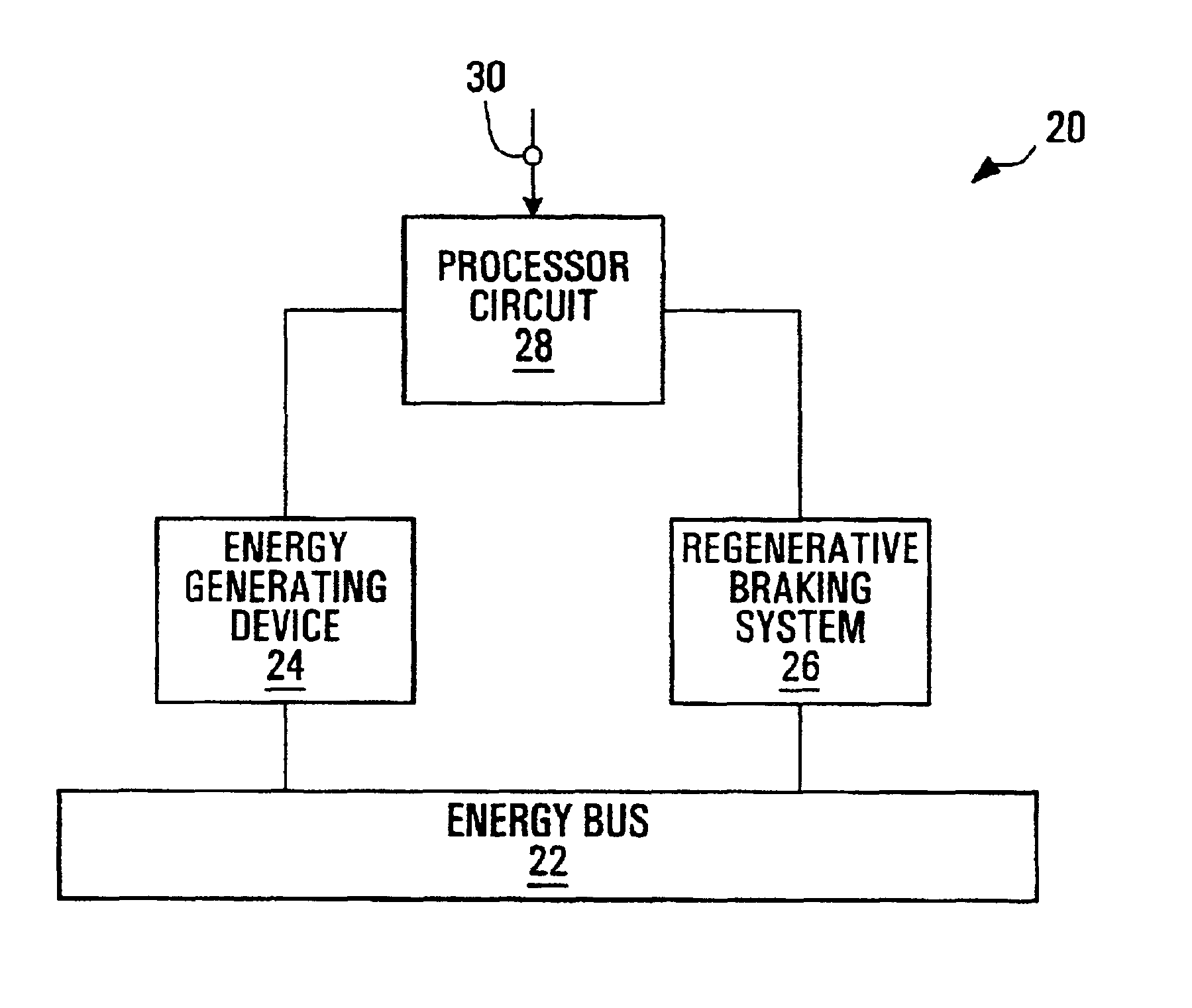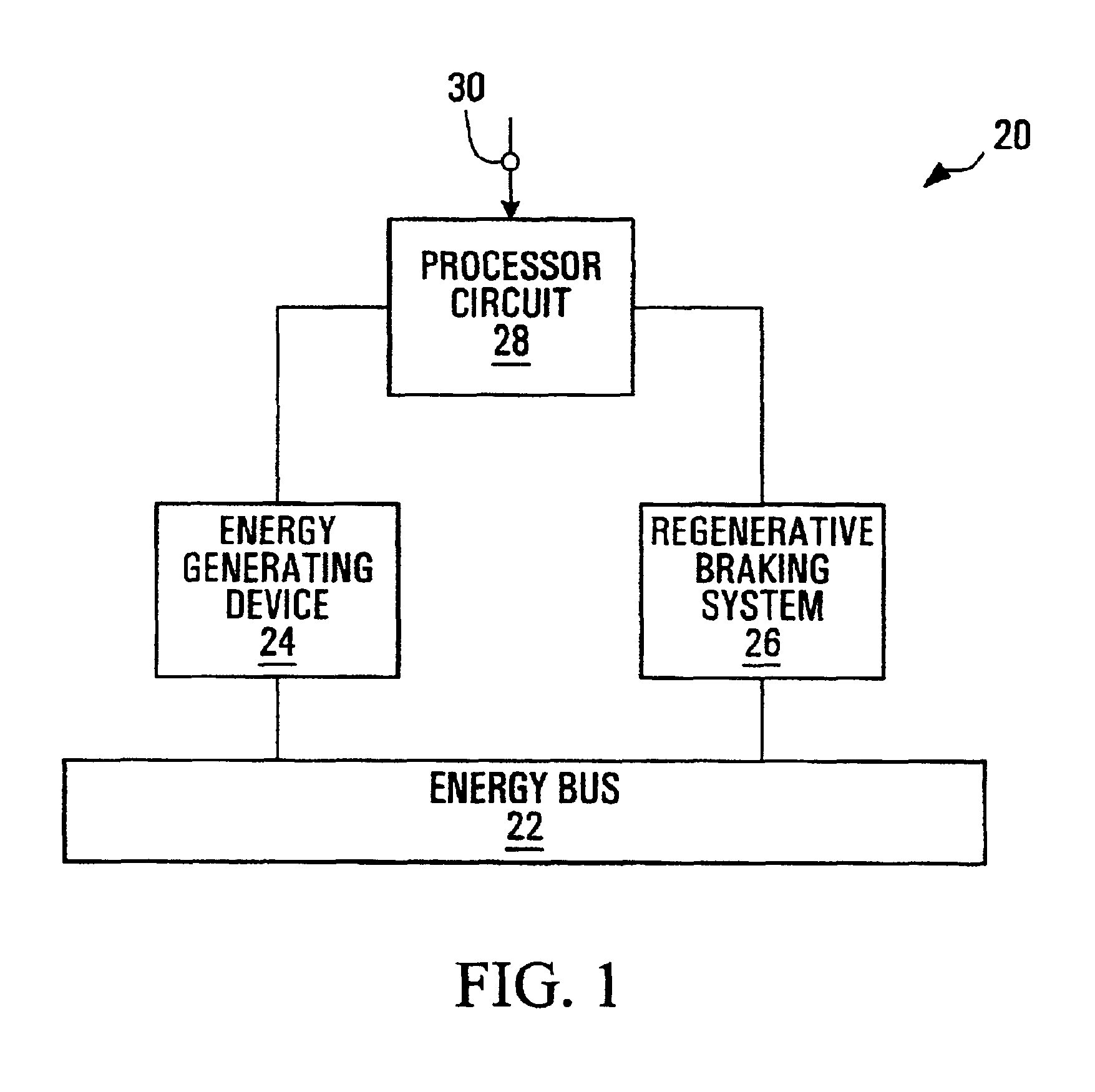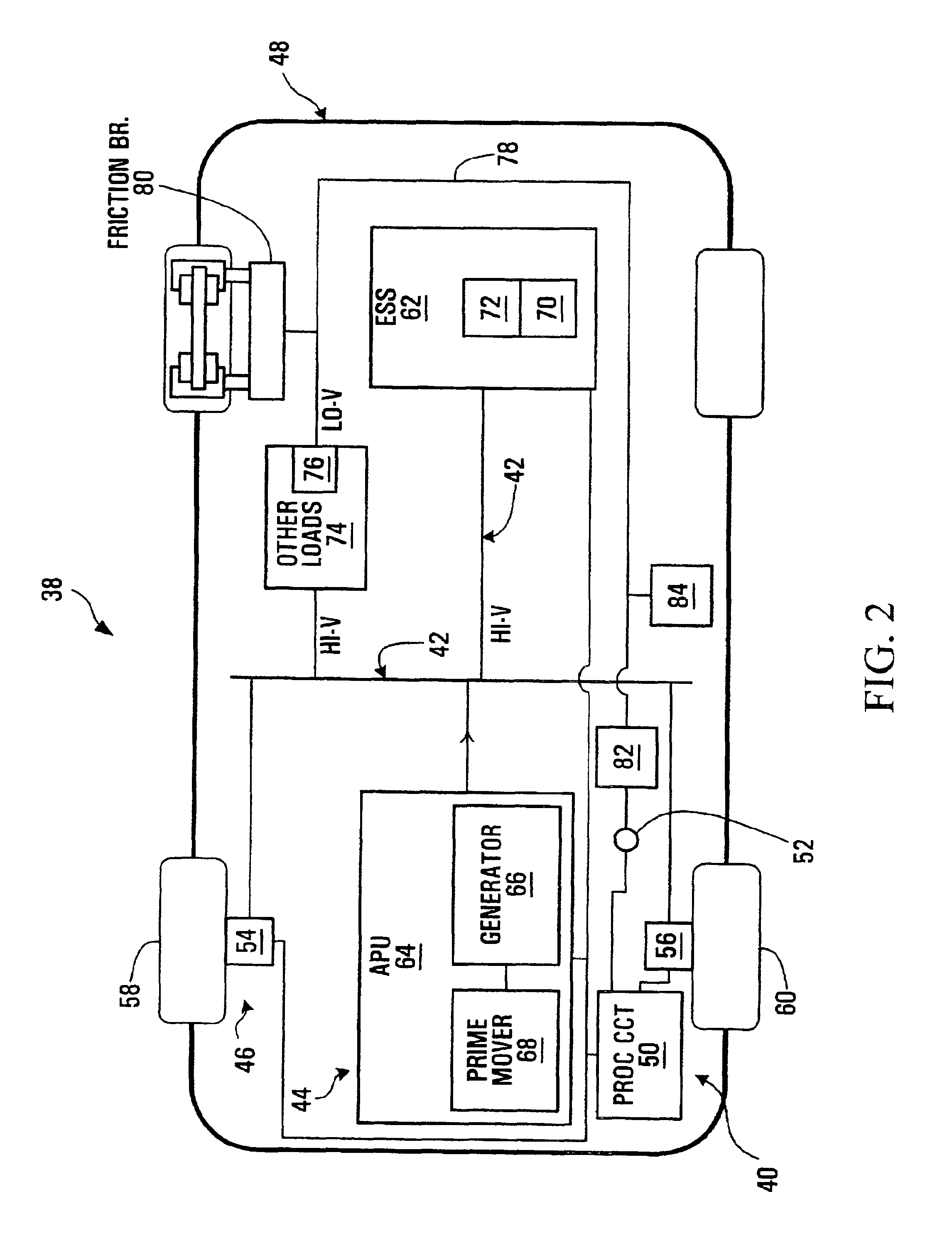Methods of supplying energy to an energy bus in a hybrid electric vehicle, and apparatuses, media and signals for the same
a hybrid electric vehicle and energy bus technology, applied in the field of vehicles, can solve the problems of inability to draw electrical energy from the energy bus and convert it into another form, regenerative braking typically produces a significant amount of surplus electrical energy, and the ability of the energy storage system to safely receive and store energy is typically limited
- Summary
- Abstract
- Description
- Claims
- Application Information
AI Technical Summary
Benefits of technology
Problems solved by technology
Method used
Image
Examples
first embodiment
[0063]Referring to FIG. 1, an apparatus according to the invention is shown generally at 20. In this embodiment, the apparatus is used for supplying energy to an energy bus 22 in communication with an energy generating device 24 and with a regenerative braking system 26 in a hybrid electric vehicle (not shown). The apparatus 20 includes a processor circuit 28, configured to control power supplied by the energy generating device 24 to the energy bus 22, in response to a braking signal 30 indicative of user brake actuation.
[0064]In this embodiment, the processor circuit 28 is configured to control energy contributions onto the energy bus 22 from the energy generating device 24 and from the regenerative braking system 26 respectively, to prevent the contributions from exceeding a desired total energy contribution.
second embodiment
[0065]Referring to FIG. 2, a system according to the invention is shown generally at 38. In this embodiment, the system 38 includes an apparatus 40 for supplying energy to an energy bus 42 in communication with an energy generating device shown generally at 44 and with a regenerative braking system shown generally at 46, in a hybrid electric vehicle 48. In this embodiment, the apparatus 40 includes a processor circuit 50 configured to control power supplied by the energy generating device 44 to the energy bus 42, in response to a braking signal 52 indicative of user brake actuation. In this embodiment, the processor circuit 50 is also configured to control energy contributions onto the energy bus 42 from the energy generating device 44 and from the regenerative braking system 46 respectively, to prevent the contributions from exceeding a desired total energy contribution.
[0066]In this embodiment, the hybrid electric vehicle 48 includes a series hybrid electric vehicle. The regenerat...
PUM
 Login to View More
Login to View More Abstract
Description
Claims
Application Information
 Login to View More
Login to View More - R&D
- Intellectual Property
- Life Sciences
- Materials
- Tech Scout
- Unparalleled Data Quality
- Higher Quality Content
- 60% Fewer Hallucinations
Browse by: Latest US Patents, China's latest patents, Technical Efficacy Thesaurus, Application Domain, Technology Topic, Popular Technical Reports.
© 2025 PatSnap. All rights reserved.Legal|Privacy policy|Modern Slavery Act Transparency Statement|Sitemap|About US| Contact US: help@patsnap.com



